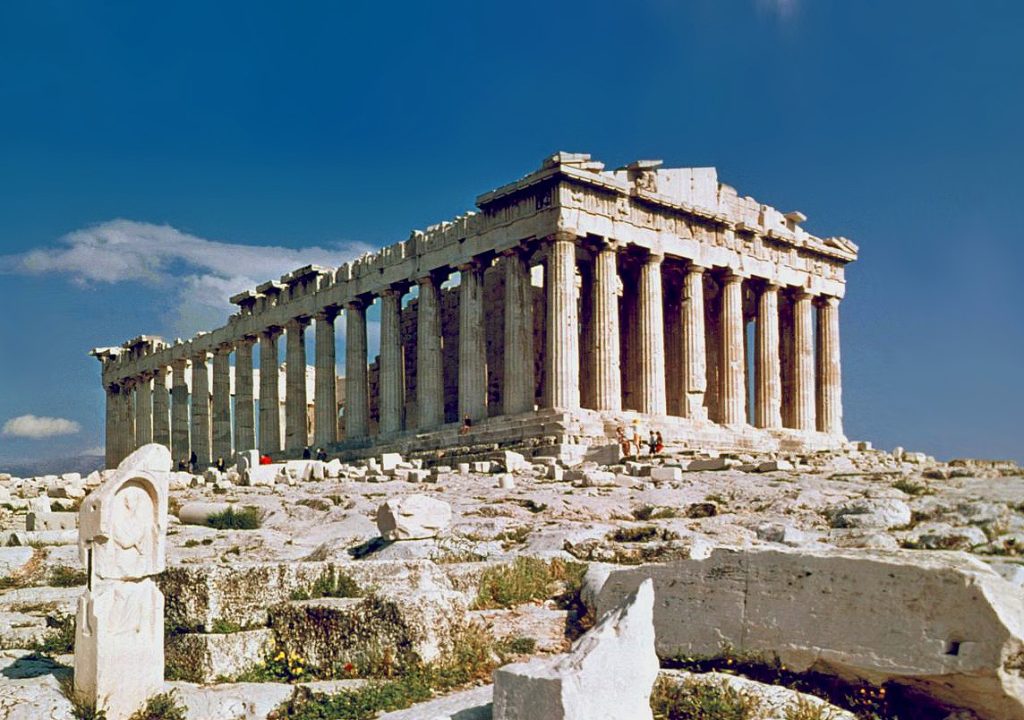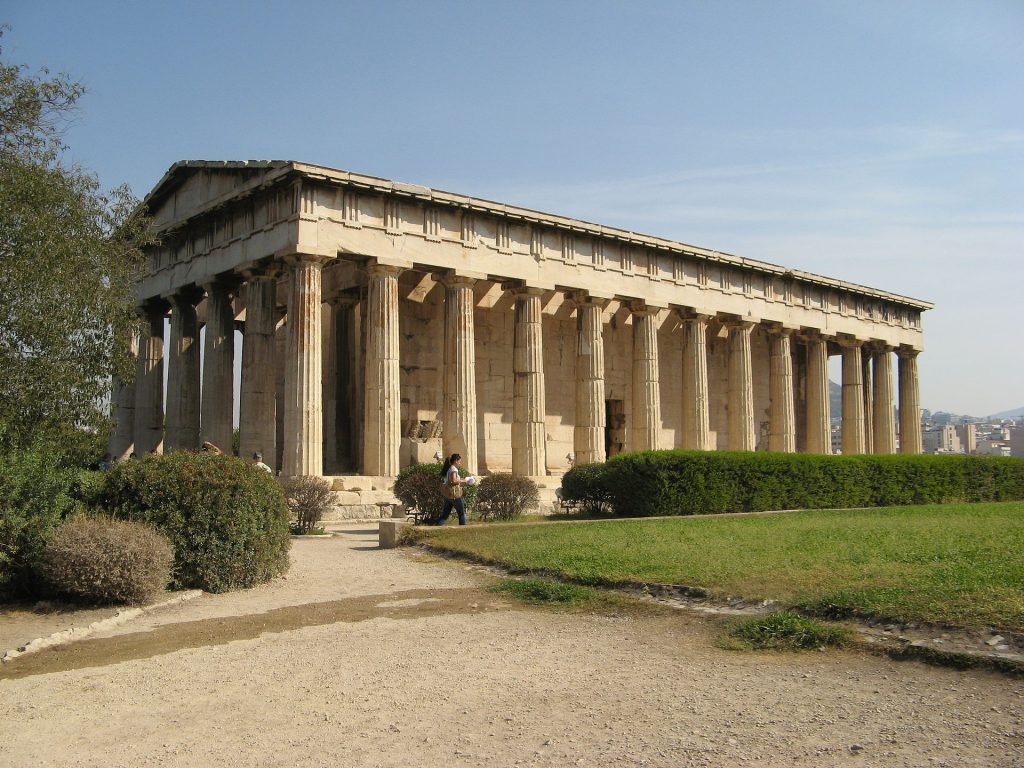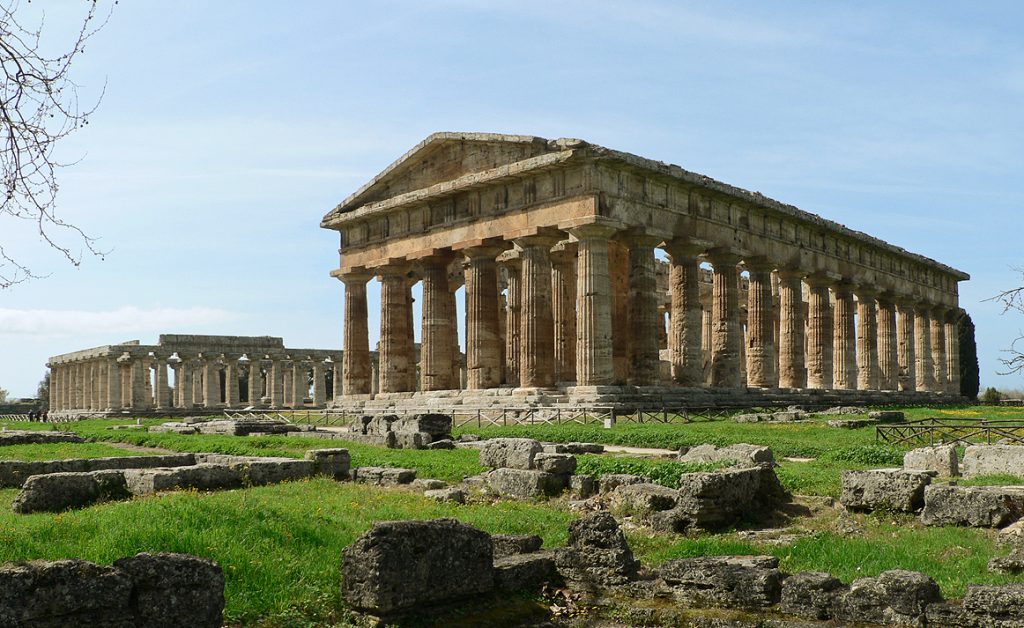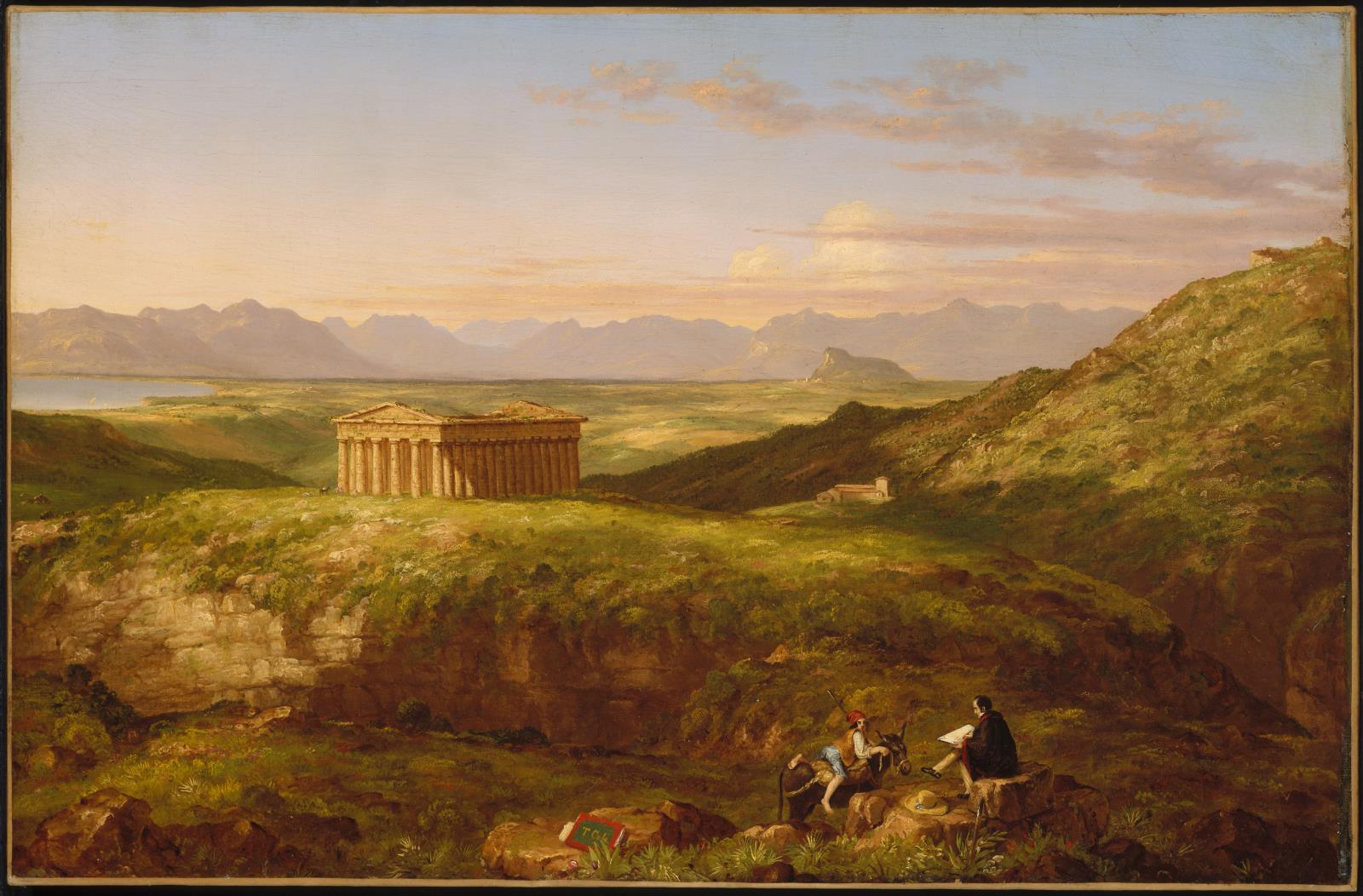Written by Divya Gupta, Contributing Writer, Classical Wisdom
The most sacred structures in Greek Mythology were the enigmatic sanctuaries. Temples were usually located at the center of the sanctuary which was enclosed by walls from all sides. This spiritual place featured a massive landscape with sacred trees and springs. In the center of the area stood a monumental cult statue of the deity that the temple honored. The outdoor altar had several niches where statues of other gods and goddesses were erected.
Unlike modern churches and synagogues, the temple was not a place for rituals, but it was more like a home to the gods and goddesses. Most common people were not allowed inside the temple sparing a few occasions every year. The sacred precincts were built as a place to offer homage to the gods with gifts and offerings. Gigantic columns were the principal component in every temple. Greek architecture features three major types of columns – the Doric, Ionic, and Corinthian, all of which can be seen in various temples even today.
Temples were located away from the city in a large area and would often benefit from the surroundings to express the character of the spiritual entity. So, a temple dedicated to the god of the sea would be constructed near the seashore.
While many of the Greek temples couldn’t stand the test of time, a lot of them can still be embraced today in Greece and the Southern parts of Italy. Here are some of the most iconic temples that glorify the rich history of Greek architecture.
- Parthenon, Acropolis
The Parthenon, the largest Doric temple, was dedicated to the city’s patron goddess, Athena Parthenos. The construction of the temple began during the age of Pericles, around 447BC. This monumental structure stands as a testimony of power and glory, to honor the goddess of indomitable might. Hence the rocky location of the Acropolis served as the ideal location to portray the goddess’s strength. The ancient statue of the deity was made using ivory and gold, which was later stolen by the Persians.

The Parthenon
Today, the Parthenon is considered one of the most renowned UNESCO World Heritage sites, attracting millions of tourists every year. A trip to Greece is practically incomplete if you do not pay a visit to this magnificent structure.
- Temple of Hephaestus
The Temple of Hephaestus, dedicated to the god of metalwork, sits on the top of Agoraios Kolonos hill, merely 500 meters away from the famous Acropolis. The region was once considered as a hub of foundries and metal workshops and thus served as a perfect location for the temple. The Temple of Hephaestus was designed by the promising architect Ictinus, who also worked on the Parthenon. It is one of the most well-preserved Greek temples that stands intact even today!

The Temple of Hephaistos in Athens
- Paestum
Paestum was a famous Greco-Roman city in Southern Italy, very close to the shore. The sanctuary, constructed around 550BC is considered as a pioneer of Greek temples. The ruins of Paestum consist of three famous Greek temples all made in Doric orders. The temple of Hera, goddess of marriage and childbirth, is one of the oldest temples and has surprisingly still has its entablatures intact.

View of Paestum.
- Temple of Apollo Epicurius
The temple of Apollo Epicurious, dedicated to the god of healing and Sun, is one of the most unusual Greek temples. The daring architecture consists of all three forms of segments, Doric, Ionic, and Corinthian, which gives the temple a unique character. Another bizarre attribute of this temple is that it opens up northward, unlike the rest of the Greek temples that are facing east. Located in the mountains of Peloponnese, this well-preserved temple stands as an evocative testament to the brilliance of Greek Architecture!

The Temple of Apollo Epikourios at Bassae, east colonnade, Arcadia, Greece
- Segesta
Located in the north-western part of Sicily, the temple of Segesta offers a distinctive experience to the viewers. Segesta was once inhabited by Elymians, the indigenous people of Sicily. With the widespread Greek influence, the region of Segesta adopted the new culture and blended easily. The temple follows all the strict features of Greek Doric Order but, on a closer look, one can see the unfinished structures. The temple of Segesta never actually had a roof or fluted segments. The inner chamber, also called naos, never really saw the light of day either.

The Doric temple of Segesta
- Erectheum
Erectheum is probably the most popular Greek temple in the modern world. Every history lover and art enthusiast has read about the temple in a million articles, and words fall short to describe the beauty of its architecture! This antique sanctuary, located to the north of the Acropolis of Athens, features the most celebrated segment style, the Ionic Order. The iconic six female figures upheld in the yard, known as Caryatids, is one of the most magnificent examples of Greek architecture.

Temple of Erectheum
- Temple of Poseidon at Sounion
Sounion is considered one of the most important sanctuaries in the Attica region. The temple was erected in honor of Poseidon, the god of the sea. Hence, the sanctuary catapulted overlooking the gorgeous views of the sea from three sides. Once upon a time, this Greek Doric temple flaunted 34 grand columns made of white marble. But today, only 15 stand tall, preserving the marvelousness of Greek architecture.

Temple of Poseidon at Cape Sounion
Thousands of years later, these enchanting Greek temples still provide a window to the past and remain some of the best-preserved testaments to history.
References:










4 comments
Hallo there!
Thank for this article. It is absolutely stunning!
Pieter J (PJ)
Hallo there!
Thank you for this article. It is absolutely stunning!
Pieter J (PJ)
I love the articles and photos. You have given us outstanding photographs of these temples along with very well written short essays about each one. But I kindly question what surely must be a mistake.
You write: “Thousands of centuries later, these enchanting Greek temples still provide a window to the past and remain some of the best-preserved testaments to history.”
I’m almost certain you don’t mean these have stood for thousands of centuries. A thousand centuries is a very, very long time. So long in fact, it would predate the earliest known existence of any sapien antecedent.
Hi dear reader,
Glad you enjoyed the article! Also, thank you for pointing out that mistake! I’ve gone ahead and changed it now.
Best,
Alex
Trackbacks
Our apologies, you must be logged in to post a comment.